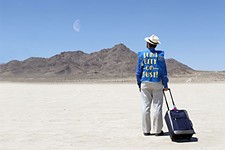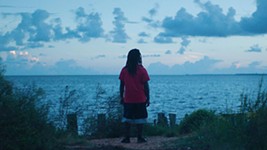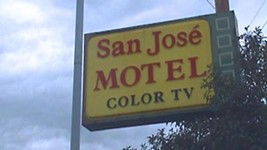Delving Deeper Into the Archive of a Dark Time
Doc Nights: 'Shoah: The Unseen Interviews'
By Anne S. Lewis, Fri., Feb. 3, 2012
Last year was the 25th anniversary of Shoah, French director Claude Lanzmann's 9¼-hours-long, genre-bending documentary about the Holocaust. The film has been heralded since then for the remarkable way it reconstructed the genocide of 6 million European Jews without the use of any historical archival footage, the now-familiar images of death camps, or the mass graves scattered throughout the Polish countryside, holding the remains of Jews who'd been dragged from their village homes and forced to dig the pits they would fall into when they were shot in the head.
Instead, Lanzmann sussed out what he described in interviews at the time as "the machinery of death in all its detail" by subtly and thematically layering the personal recollections of those victims, perpetrators, witnesses, and bystanders he was able to track down in 14 countries over the course of 11 years. These, along with then-present-day footage of the sites where it all took place: the deserted concentration camps, the Polish villages with Poles occupying houses once owned by Jews, the trains moving through the countryside, their cargo cars now freighted with unspeakable associations. Watching Lanzmann's interviews, in close-up, with perpetrators like the former Nazi death camp commandant who describes the day-to-day nuts and bolts of keeping a death camp running smoothly brings to mind Hannah Arendt's Eichmann trial observations about the "banality of evil." (Interviews such as these were not always granted with a smile and a signed consent form; Lanzmann frequently resorted to the subterfuge of a hidden camera, and was once caught and beaten.)
In the end, Lanzmann recorded more than 300 hours of filmed interviews for the film he edited down to just over nine hours in length. He subsequently donated 220 hours of this archive to the United States Holocaust Memorial Museum in Washington, D.C., (which co-owns the tapes with Israel's Yad Vashem) in order to make them available to scholars and others studying this period of history, explained Leslie Swift, a film researcher at the USHMM's Steven Spielberg Film and Video Archive. (All preserved Shoah outtake interviews, with transcriptions, can be viewed online at www.ushmm.org. Fascinating stuff, this.)
Shoah: The Unseen Interviews is a 55-minute compilation of excerpts from three interviews in Lanzmann's Shoah archive, parts of which were included in the original film. The first is with Abraham Bomba, a Jewish barber whose job as an inmate at Treblinka was to cut the hair of Jews before they entered the gas chambers. The second is Peter Bergson, a Lithuanian-born Jew who talks of his uphill battle to alert the U.S. government and American Jews to the extermination of the European Jews in order to mobilize a response. The third interview is with Ruth Elias, a Czech Jew who describes her horrific pregnancy and the birth of her baby while in the sadistic medical care of Dr. Josef Mengele.
The Austin Chronicle: Why did the USHMM decide to produce this compilation?
Leslie Swift: It in no way reflects the editorial choices made by Claude Lanzmann in the making of his film. At the same time, it is not a stand-alone project, stemming as it does from the interviews conducted by Lanzmann. In the presentations that archive staff give to introduce the film we, of course, refer to Shoah and the themes that emerge in that film. However, the outtake interviews are extremely wide-ranging, covering the lives these people lived before the war, controversial issues of collaboration, American responses to the Holocaust, and much, much more. With this compilation, we wanted to begin to explore some of these themes.
AC: Is there a theme underlying your selection of these interviews?
LS: We wanted to show outtakes from one interview that was heavily used in the film, Abraham Bomba, one that was very little used, Ruth Elias, and one that wasn't used at all in the final film, Peter Bergson. Bomba's interview focuses on those parts of his story other than the killing process. Ruth Elias' experience could only happen to a woman, and we wanted to say something about the particular ways in which women experienced the Holocaust. Peter Bergson talks about American responses (or lack thereof), which is of interest to American audiences. Besides that, we were restricted to English-language interviews because of the prohibitive costs of translating and subtitling foreign-language interviews.
AC: Do you plan more of these compilations, or is this simply a one-off?
LS: We hope there will be further programs, but right now our focus is on bringing attention to this remarkable collection and encouraging scholars and others to want to know more.
Leslie Swift will be in attendance for the Austin Film Society and Austin Jewish Film Festival-sponsored screening of Shoah: The Unseen Interviews on Wednesday, Feb. 8, 7pm, at Alamo Lamar.











